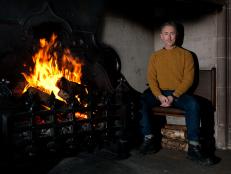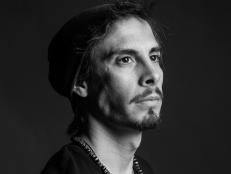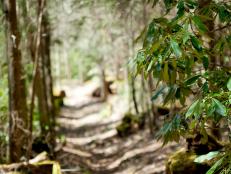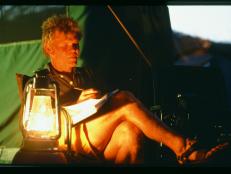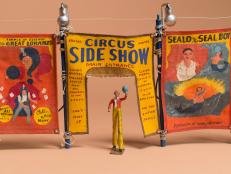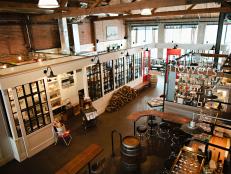Roaming With: 100cameras Angela Popplewell
When you find something that aligns with your brand and mission so perfectly, you have to shout it from the rooftops. That’s how we feel about 100cameras, a non-profit organization that works with children in South Sudan, India, Cuba, Haiti, New York City and Baltimore.

We thought 100cameras would be the perfect group to spotlight today for the first annual #WorldPerspectiveDay, a day that celebrates powerful perspectives shared throughout the world.
The team at 100cameras and their local partner organizations on the ground, teach children photojournalism, which allows the kids to venture out into their community and capture their everyday lives with the cameras donated to the organization. The photographs are then sold through 100cameras and the proceeds made on each photo go back into that child’s life by way of monetary support for their health, education or some other lifeline (i.e. a roof over their head, border protections and more).
With their first project having launched in South Sudan in 2008, nearly 10 years later, 100cameras has touched the lives of 149 students with plans to reach 200 by the end of 2017 through their new Snapshot program. Roam caught up with Angela Popplewell, one of the four co-founders of 100cameras, to talk about the organization's beginning, present and future.
How did the idea for 100cameras come about?
There were actually four friends who were co-founders from the beginning, in 2008. Every co-founder had a different background and interest that they brought into the model. Mine was that I had lived and worked abroad in communities where I worked in community development in a small village in India and Romania, amongst some others before moving into New York after college. I had become passionate about the empowerment model and also [about] storytelling. My background is creative writing and journalism. I came alive when speaking with people about their stories. At the same time, I was interning with Charity Water back when it was small. I think I was the 4th or 5th person to join the team as an intern. They had created the idea around the 100 percent model, connecting a donation or sale directly with the people in need on the ground. That was very influential for when we built out our model. At the same time, we also had a photographer who was one of the co-founders; a creative designer and a financial, business-savvy individual.
Oftentimes when you’re traveling, you’re pointing your camera at anything and sometimes, everything. From the locals perspective, it might seem a little intrusive. That’s where one photographer’s idea was brought to the table and gave the mission of 100cameras legs.

'What if we could give kids the opportunity to tell the story? What if we could put the cameras into their hands and let them show their everyday life; they can document life as they see it - in the community, in their home life, with their friends and let that document the pieces of injustice they’re living in due to poverty?'
What were some challenges that you came across, if any, in the first country where the 100cameras model was tested?
We did a test run in South Sudan. Then, brought the photos back to New York. We ordered pizza and then looked at the kids' pictures and we were blown away. The students images captured so much hope and joy, in ways we weren’t expecting. In ways that brought dignity and beauty to their stories. It still documented all of the injustices: They walked hours to get water from a well. They were all victims of the civil war between Sudan and South Sudan (before South Sudan was formed). There was something that changed inside all of us and that’s when we said, 'Ok.' We wanted to build a model that allowed these stories to be told.

We literally cleared out all of the furniture in our tiny New York apartment and installed 80 frames into the walls. About 75 people came to the first event in our apartment. We invited anyone we knew, including strangers on the street. People had the same response we did. They saw the hope and the joy shown in the photographs and it made them want to help that kid or community; not out of pity but to help a child keep that joy - in their circumstances. That’s when we fully built out the idea that we’d sell the kids images and that money would go towards medical supplies or educational supplies, which would also teach them ownership, and empowerment and excitement that they could provide these items themselves to their community.
How do you decide which city/country you’re going to bring 100cameras into next?
All of the partners we have, which we now call flagship projects, were in the early days the only projects/cities we worked in. All of those partner organizations have come to us through a first or second connection (someone on our team knew the person or organization). Until we become large enough that we can send a teammate to vet potential partner organizations, we go with ones where we know someone who has worked with them.

In the past 2 years, we launched the Snapshot Project Platform and Workshop. We packaged up our curriculum; everything we’ve learned in the field, and we teach and equip a photographer or creative to lead a project in a community they care about. The connection with these new communities we’re helping is because of the local contact (i.e. photographer or creative) on the ground. We’re open to work anywhere in the world.
How are the children taught to take pictures?
100cameras has developed a custom photojournalism curriculum for students in the field. Some of our students have never before held a camera, so we have incorporated lots of basics like exposure and composition, but also more specific training like portraiture and detailed storytelling. We have also begun to extend training sessions to new teachers through our Snapshot Project platform, which is the newest way for you to apply to bring 100cameras to a community you care about.
Are the children taught photojournalism by a photojournalist, teacher and/or photographer?
When the 100cameras team goes into the field for a flagship project like Project004: India or Project005: Baltimore, the developers of the curriculum (JP Pullos and Angela Popplewell) lead specific portions of each class with the help of other photographers, teachers, and storytellers who have volunteered their time or have been sponsored to join in the project. These teams are also made up of photojournalists who help us record the trip.

For Snapshot projects, we have a lengthy application process, followed by training sessions with our team. This way, we can both ensure that the organizations on the ground are sound, and the teachers/photographers who will become Snapshot Leaders are fully equipped to handle their work in the field.
What is the age range of the kids that 100cameras works with? Are there plans to expand to younger and/or older children?
The 100cameras curriculum is written and geared towards working with students ages 10 - 18. However, 100cameras will always remain flexible to accept students younger and older at the recommendation of the partner organization based upon their relationship and experience with the students they serve on a daily basis.
What types of cameras do the children work with?
Our kids go through the 100cameras curriculum with point-and-shoot cameras donated by Leica, and are then given a donated point-and-shoot to keep (differing brands).
How would donors provide cameras?
We're always looking to partner with brands who are willing to donate equipment for our projects, but individuals are encouraged to donate their point-and-shoot cameras and SD cards to us by emailing yes@100cameras.org. We have been fortunate to receive both types of donations in the past.
The money that the children make off of the sale of their photographs, it goes back into their health, education and life needs. Do you see 100cameras expanding that need in the next 3-5 years?

Part of the reason we have such a vetting process for our partners is because we rely heavily on them, for picking, planning and determining where the biggest need is (i.e. funding for medical supplies or education). In some communities, they can’t think about education supplies until the children are well enough to attend school. Another need is our lifeline support: food, water or shelter.
Food has been a very big need, especially in South Sudan. Two widows in South Sudan formed a program solely out of the need of the local children who needed food, who were showing up at the doorstep because they had lost their families.
We’ve done lifeline supplies in the form of a fence.The LRA (Lord's Resistance Army insurgency) was having a lot of activity in the area when we started the project, so the community asked for us to focus funds on building a fence/barrier around the compound. They said in their experience, a fence would defer a lot of unwanted activity.
Lifeline supplies has the most flexibility out of the three buckets and we’re comfortable with that. Every community and culture organization is different. We have a team and a board that will really think through whether or not it’s a lifeline supply. Our goal is to listen to what the partner organization needs.

We haven’t made the decision to expand those needs because we have found that those three buckets are very helpful, to make sure that the money really does go to things that serve the kids, in every way possible. We’re very protective that the funds don’t go to things like office supplies, furniture, etc, unless it’s desks for a classroom.
Where does 100Cameras see itself in the next 3-5 years?
The long term vision is that we want to equip people to lead projects in hundreds of communities and ultimately serve thousands of kids, and empower them to know that their stories matter. Their perspectives are unique and important and they can create change in their communities. We really see the way to do that is with our Snapshot Project Platform and Workshops.
We realized a couple years ago that if we continued to hold this too close to the vest and only did projects our team could go on, then we’d always be limited with how many kids we can work with. The long term vision is to keep opening it up more and more to train and equip people to lead projects in communities they care about.
Can anyone volunteer with 100cameras? What are the opportunities?
At this time, we are looking for these roles to be based in NYC. We specifically need help with the following:
-- Volunteers to serve at our upcoming event gala on May 19th in Tribeca. Email caroline@100cameras.org if interested.
For volunteer roles based outside of NYC, we are looking for the following:
-- Volunteers who have experience and interest in helping with Photoshop/Illustrator needs (Included but not limited to watermarking, basic photo edits, and designing graphics)
-- Volunteers who love research and creating excel databases. Specifically targeting potential partnership and collaboration opportunity sourcing.
For volunteer opportunities in the field directly working with students, please check out our Workshop and Snapshot Project application opportunities. This is the most direct way to work in the field alongside the mission of 100cameras in a community you care about.

